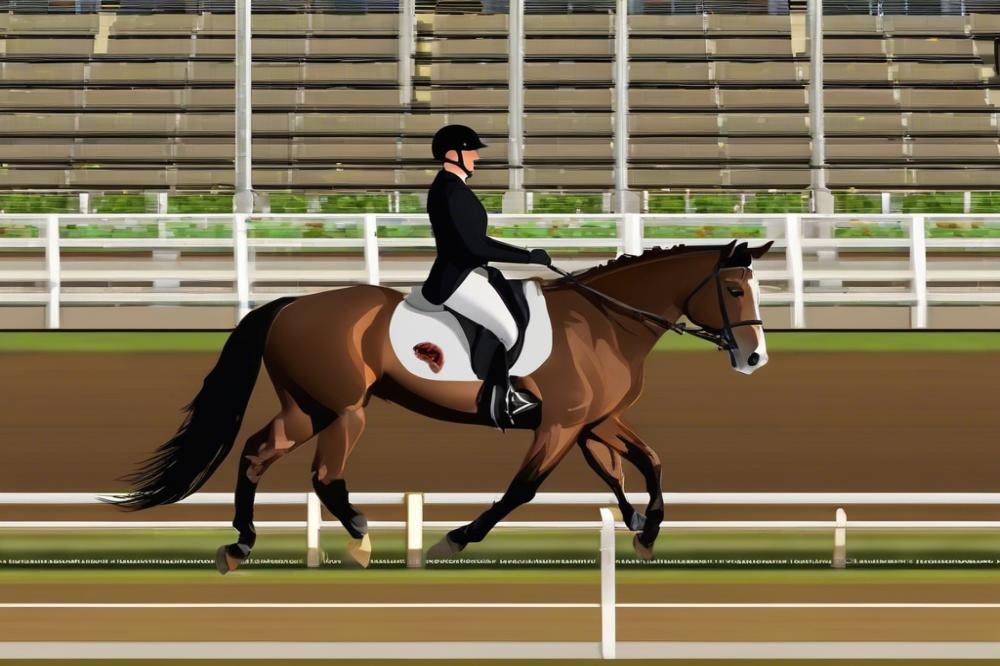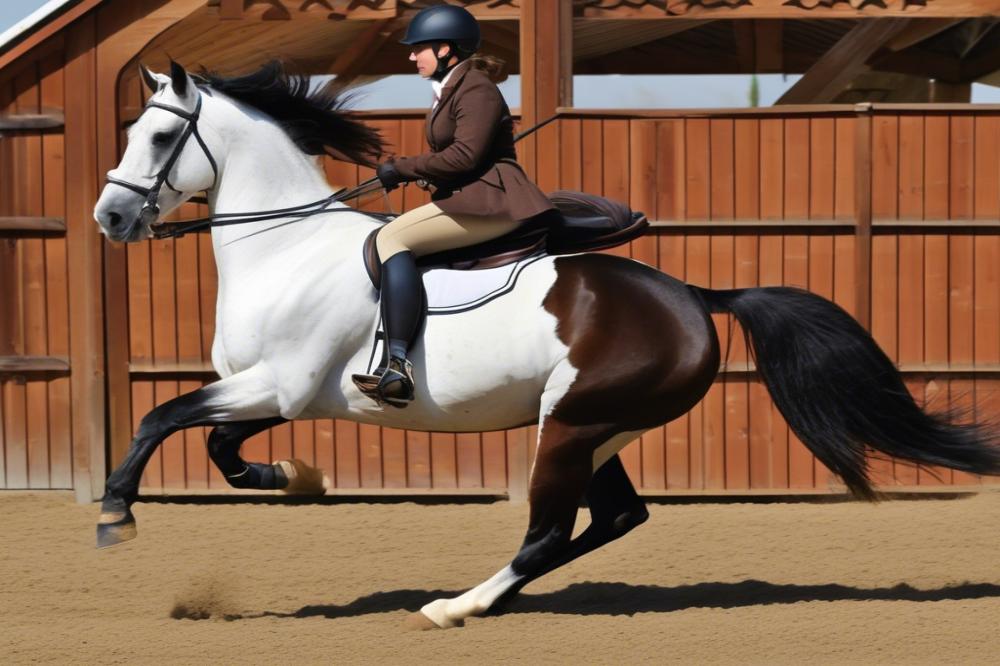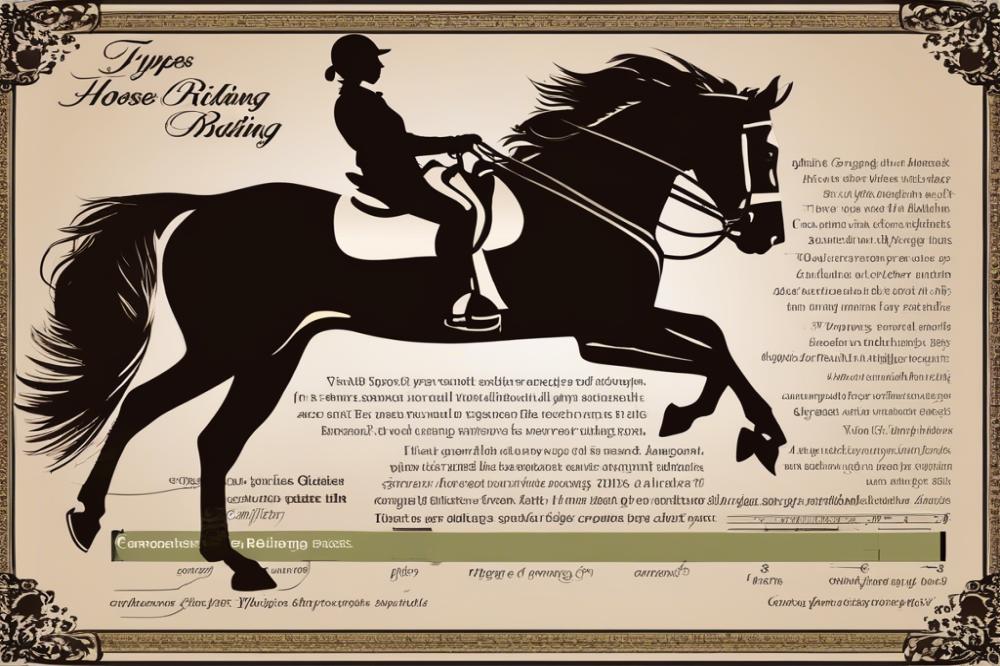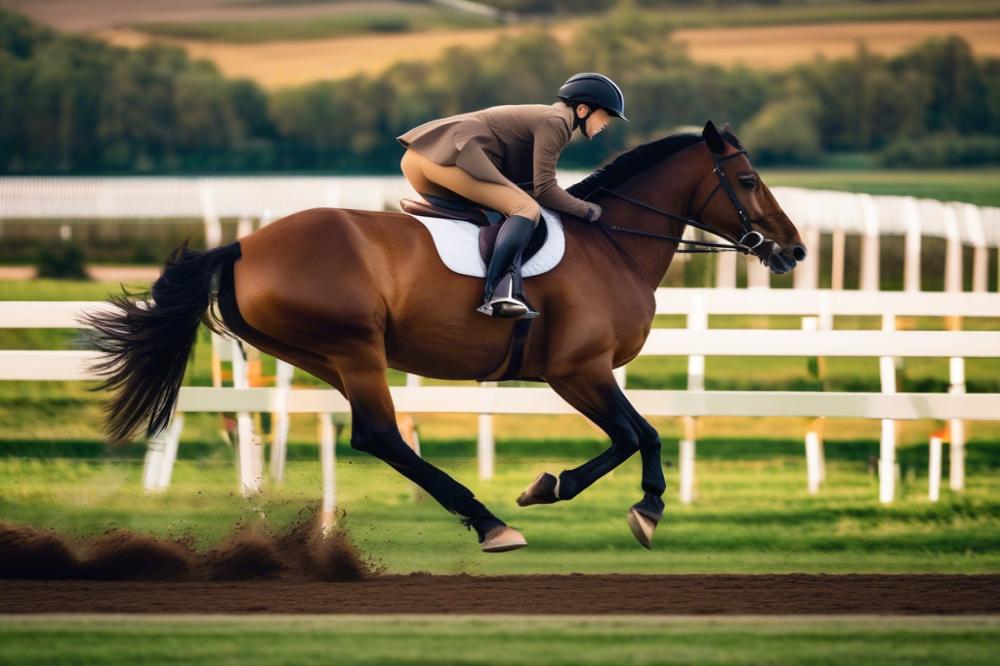Overview of Horse Riding
Horse riding, a timeless activity that has captivated hearts for centuries, can be a thrilling pursuit. It connects us with these majestic creatures and offers both adventure and companionship. Whether you’re trotting through a serene field or galloping across open plains, there’s something magical about the bond formed between rider and horse. This age-old practice isn’t just about sitting in a saddle; it encompasses a whole universe of equestrian techniques and skills.
The Popularity of Horse Riding
Across various cultures, riding has remained popular, attracting enthusiasts of all ages. It appeals to people for countless reasons, from those seeking a relaxing escape to competitive riders chasing their next ribbon. Each person may have different motivations, but the joy we derive from riding is something that unites us all. Riding clubs, competitions, and events are scattered throughout neighborhoods and communities, fostering friendships and a sense of belonging among riders.
Exploring Different Riding Styles
When we talk about riding styles, we dive into a world filled with choices. Each style represents unique skills and philosophies. Some want to master Western riding, with its roots in cattle herding. Others might prefer the elegance of English riding or the excitement found in jumping. No matter the style, a solid foundation in horse care and horse training supports the journey. It’s about respecting the animal, understanding its needs, and working together as a team.
A Horse Riding Guide
For those curious about this fascinating world, a good horse riding guide is essential. It can lead you through the fundamentals, helping beginners and experienced riders alike. You’ll learn everything from basic techniques to care routines. Remember, the learning never stops! Be prepared to engage in various activities like grooming your horse or even discussing beneficial supplements to make your horse run faster.
Lastly, buying a horse at auction can become an exciting adventure in itself. However, whether you’re considering buying or just watching the magic unfold, there’s always something new in the world of equine sports. So, saddle up, and let’s explore the thrilling types of horse riding that await!
Western Riding

Western riding is all about comfort and control. It has a rich history that originates from the traditions of cattle herding in North America. Riders use specific techniques that reflect the working partnerships between the horse and the cowboy. This style focuses on practical skills. It’s not just about looking good; it’s about getting the job done.
The equipment used in western riding differs greatly from other styles. A western saddle is wider and heavier than an English saddle. It’s designed to give the rider a secure seat while working long hours on a horse. You’ll often see a horn on the saddle. This allows riders to grab hold when roping cattle or making quick moves. The bridles also vary. Many riders prefer a bitless bridle because it provides a gentler approach to guiding the horse.
Disciplines Under Western Riding
Several fascinating disciplines fall under the umbrella of western riding. Barrel racing is one of the most exciting. Riders race their horses around three barrels in a cloverleaf pattern. They need sharp turns and quick moves to beat the clock. It can be thrilling to watch as they dash around those barrels like a bolt of lightning!
Then there’s roping. That discipline involves catching livestock with a rope. Timing and teamwork between horse and rider are critical here. Riders must train their horses intensively in equestrian skills to ensure they can make precise movements. There’s also roping practice to sharpen those equestrian techniques.
Riders might spend hours on horse care and horse training to prepare for competition. It’s not as simple as hopping on a horse and riding around. Perseverance and dedication are key to mastering these riding styles. Each day spent in the saddle counts, as every ride offers a new lesson. Whether you’re practicing turns for barrel racing or perfecting roping skills, there’s always something to learn.
Overall, western riding offers a unique blend of tradition, skill, and excitement. It keeps riders engaged with their horses while embracing the cowboy way of life. So, if you fancy something that mixes hard work with a bit of flair, this could be your path!
English Riding

Let’s dive into English riding, a style rich with tradition and skill. At its heart, English riding emphasizes balance, harmony, and communication between horse and rider. Riders aim to develop strong equestrian skills, using their body to guide rather than just control the horse.
Specific gear plays a huge role here. The saddle is often flatter than Western saddles. This design allows for more freedom of movement and promotes closeness between horse and rider. Usually, English saddles come in various types, each serving different needs. For instance, a dressage saddle is built to help the rider maintain a longer leg position while keeping the horse balanced. It’s all about being in sync!
Now, let’s chat about bits. Bits help the rider communicate with the horse. There are many varieties, ranging from snaffle bits to curb bits. A snaffle bit is gentler, suitable for beginners learning basic equestrian techniques. On the other hand, curb bits provide more leverage and are often used in advanced riding or in certain competitions.
Disciplines in English Riding
Choosing a discipline in English riding might feel like picking your favorite pizza topping—there are just so many tasty options! One popular discipline is show jumping. Here, riders guide their horses over a series of jumps. It requires not just skill but also precise timing. Riders must think strategically and choose the right path.
Dressage is another discipline. You could think of it as dancing with your horse. In dressage, riders execute a series of movements, showcasing the horse’s training and responsiveness. Judges score each routine based on grace, precision, and accuracy. It’s quite a sight to see a horse pirouette on command!
Eventing combines all skills in a thrilling package. Riders must master the art of dressage, show jumping, and cross-country. This test truly demonstrates the partnership between horse and rider and their grit under pressure. Each segment shows different riding styles and capabilities.
Horse care is also vital in this type of riding. Good conditioning helps the horse stay healthy and perform at its best. Riders learn the importance of grooming and feeding their horses properly. This care builds trust and ensures a positive experience during training. Plus, a well-cared-for horse is a happy horse!
As you can see, English riding offers a wealth of opportunities to develop your abilities. It provides a fantastic way to bond with these magnificent animals while enhancing your own skillset. Every rider can find a niche that fits them just right. Remember, every expert was once a beginner, so enjoy the journey!
Dressage

Dressage often gets described as ballet for horses. It showcases how well a horse can respond to its rider’s commands while performing a series of precise movements. This discipline is one of the highest forms of equestrian skills, emphasizing harmony, flexibility, and athleticism. Not only does it display the talent of the horse, but it also highlights the rider’s ability to communicate effectively. In essence, it’s a dance where both partners must be in sync.
During dressage competitions, riders guide their horses through different patterns known as “tests.” These tests include movements like the “shoulder in” and “flying changes.” Imagine a horse gracefully turning its neck while moving sideways—this is the shoulder in. Each movement is scored based on accuracy, smoothness, and the overall appearance of cooperation. Judges are looking for elegance, balance, and rhythm, which can make or break a performance.
Training methods for dressage vary. Many trainers focus on building a bond between horse and rider. Through patience and consistent practice, riders help their horses learn specific equestrian techniques. Groundwork is essential. It helps the horse understand commands before they even start under saddle. This groundwork includes exercises that build trust and confidence.
Goals in dressage aren’t just about winning ribbons. Both horse and rider work towards enhancing their skills. Riders aim to fine-tune their techniques while ensuring their horse remains comfortable and enthusiastic. Strong communication is key. Riders use subtle shifts in weight and rein pressure to guide their horses through complex movements. This level of communication requires practice, skill and a good sense of timing.
On the path to mastering dressage, setbacks can happen. It might feel like the horse is auditioning for a comedy show instead of performing a dignified routine! Sometimes, a horse may refuse to comply, leading to unexpected antics. Finding a balance between discipline and fun can make all the difference.
Overall, mastering dressage demands dedication from both the horse and its rider. Every lesson contributes towards building a respectful team. Progress might come slowly, but that’s part of the journey. As they learn, riders develop a deep appreciation for horse care, ensuring their horse is healthy and happy. With time and commitment, the dance between rider and horse becomes a true masterpiece.
Jumping
Jumping is a thrilling part of horse riding that shows off both the horse’s talent and the rider’s skills. Show jumping, in particular, is a competitive sport where riders guide their horses over a series of obstacles. Each event has judges who score performances based on how well the horse and rider complete the course. The goal is to navigate through these jumps quickly and without knocking anything down. Exciting, right?
Types of Jumps and Courses
When you watch a show jumping event, you might notice a variety of jumps. These include verticals, oxers, and liverpools. A vertical jump consists of a single obstacle, while an oxer has two parts that the horse must leap over. Liverpools are a bit trickier; they are jumps that include a water element, making the challenge even more interesting. Riders often face different courses in competitions, with some jumps placed close together and others spread apart.
Training Techniques and Skills Required
Training for show jumping requires dedication. Riders spend hours practicing equestrian skills to improve coordination and timing. They learn to maintain the proper riding position while communicating effectively with their horses. Horse training also plays a critical role. A well-trained horse knows how to respond to its rider’s cues and has confidence in jumping.
Riders also work on specific equestrian techniques, like how to approach a jump. For example, they need to gauge the distance between them and the jump accurately. This skill helps in making the perfect leap. Building a bond with the horse is essential too. A confident horse means a more exciting ride! Imagine trying to jump with a horse that doubts itself; it wouldn’t be fun at all.
Many riders practice on different riding styles to improve their overall abilities. Some may choose to ride in a more relaxed manner, while others might prefer a more lively approach. Galloping toward a jump might give you an adrenaline rush, but not everyone needs that speed. Also, horse care is important. A healthy horse can perform better, making routine check-ups part of the training process too. After all, who doesn’t want their partner to be in tip-top shape?
Endurance Riding
Endurance riding is quite the adventure for both horse and rider. Picture this: a long-distance ride through varied terrains, ranging from rocky mountains to forest trails. Riders and their horses team up to test stamina, grit, and strategy. It’s not just about speed. It’s a journey that requires a lot of planning and preparation.
In endurance events, distances can range dramatically. Some rides are as short as 25 miles, while others stretch to an incredible 100 miles or more! Riders set off in waves, and it often feels like a real expedition. The thrill of the race is palpable, but it’s also paired with significant responsibility. Guidelines dictate time limits based on distance. Completing 100 miles typically takes around 24 hours. That’s a long day in the saddle!
Challenges abound during these lengthy rides. Weather can suddenly turn, making the path muddy or slick. Horses may encounter wildlife or have to deal with steep climbs. Staying alert is essential. Riders must also possess strong equestrian skills to navigate tricky tracks and handle their horses under pressure. Misjudgments can lead to accidents or even injuries.
Horse health is paramount in this discipline. Owners need to focus heavily on horse care, ensuring their steed is in top condition. Regular veterinary check-ups and careful watch for any signs of distress are a must. Proper horse training is crucial, too. Building endurance requires time. This isn’t a last-minute, throw-on-the-saddle-and-go kind of activity. Each ride is a test of readiness.
The heart of endurance riding lies in preparation. It’s about arming yourself with knowledge on equestrian techniques and appropriate riding styles. Riders often spend months getting their horses ready, both physically and mentally. Nutrition and hydration play a critical role, too. Similar to a marathon, feeling refreshed can make all the difference. Water stops are part of the plan, allowing horses to recharge.
Ultimately, endurance riding is not for the faint-hearted. Riders must balance ambition with the welfare of their horses. Whether you are just starting or are a seasoned pro, a good horse riding guide can help navigate this unique world. If there’s one thing to know, it’s this: the bond between horse and rider is tested on the open trail—but together, they can conquer mighty challenges!
Reining
Reining is a fascinating western riding discipline. It showcases the bond between horse and rider in a competition setting. Riders demonstrate their equestrian skills through a series of precise maneuvers. The goal is to impress judges with grace and control.
Common movements include spins, stops, and circles. These skills highlight the importance of timing and accuracy. Riders hold the reins lightly but firmly, expecting the horse to respond to tiny cues. Stopping on a dime, known as a “slide,” is a crowd favorite. Imagine a car screeching to a halt; that’s the level of finesse required!
Precision is not just a buzzword here; it’s everything. A single misplaced signal can lead to a lower score. Riders practice intricate patterns to showcase their talent. Each maneuver must flow seamlessly into the next. Reflexes and horse training play crucial roles in pulling off these difficult tasks.
Scoring in reining is based on a point system. Judges observe each movement carefully. They assign points ranging from +1.5 for excellent execution to -1.5 for mistakes. Attention to detail can mean the difference between winning and losing. It’s that serious! Riders aim for high scores by impressing the audience with their equestrian techniques.
Competitions can come in various formats. Some events might involve individual performances while others could feature team showdowns. All riders must follow a specific pattern. This can range from simple trot circles to complex, flowing routines. Many enthusiasts appreciate the different riding styles shown at these events.
The adrenaline during a competition is something else! Watching a rider glide through spins is like watching a dancer perform; they make it look effortless. The excitement is palpable as riders and horses work in harmony. Maintaining strong horse care, both mentally and physically, is vital for success in this demanding sport.
In the end, reining isn’t just about winning. It’s about the journey, the hours of practice, and understanding your horse. Every ride teaches something new, and that’s part of what keeps riders hooked. So next time you watch a reining competition, pay close attention! Each move tells a story of dedication and teamwork.
Other Types of Horse Riding
When you think about riding a horse, many of us picture traditional Western or English styles. However, there are many other thrilling ways to saddle up. Let’s dive into some lesser-known disciplines that are gaining attention.
Vaulting
Vaulting is like gymnastics on horseback. It involves performing dances, jumps, and tricks while the horse trots in a circle. Riders, known as vaulters, develop incredible equestrian skills. Not only does it look impressive, but it’s also an excellent way to build balance and coordination. Many see it as a fun way to bond with the horse. After all, you need trust to leap onto a moving animal!
Polo
Polo is often called the sport of kings. In this thrilling game, players ride on horses and use mallets to hit a ball into the opposing team’s goal. The excitement isn’t just about speed, but also strategy and teamwork. Like chess on horseback, knowing how to position yourself can be the difference between winning and losing. Polo has rich traditions around the world, from Argentina to England, bringing together diverse communities through competition.
Trail Riding
Trail riding offers a serene escape into nature. Riders guide their horses along scenic paths, through forests, and across rivers. It’s about enjoying the journey rather than rushing to the finish line. Many people find comfort in this peaceful riding style, as it allows for reflection and connection with nature. Before heading out, some may use a horse riding guide to ensure they stay safe and find the best trails.
Participating in these activities not only enhances your equestrian techniques but also teaches essential lessons about horse care and horse training. Different cultures cherish these disciplines for various reasons. For example, vaulting celebrates creativity and teamwork, while polo showcases strategy and elegance. Each discipline holds a special place in the hearts of riders and spectators alike.
Exploring these engaging forms of riding can lead to lifelong friendships and unforgettable experiences. So why not saddle up and give one a try? You might just discover a new passion waiting for you on horseback.
Final Thoughts on Horse Riding
As we wrap up our journey through the fascinating world of horse riding, it’s clear that there are many paths one can take. Each style offers its own flair, from the controlled elegance of dressage, where riders perform complex patterns like the dressage serpentine, to the thrilling jumps and obstacles in show jumping. You’ve also got the adventure of trail riding, allowing you to experience nature while bonding with your horse. Each discipline has its own appeal, ensuring that there’s something for everyone, whether you’re a seasoned rider or someone who’s just starting out.
Many might think of horseback riding as a one-size-fits-all activity. In reality, it’s much more like a grand buffet—there’s a little something for every palate. For those who crave speed, just wait until you see barrel racing! And let’s not forget about Western riding, which brings with it a whole cultural experience. As you can see, horseback riding invites you into a diverse and vibrant community. You’ll meet different people, encounter unique challenges, and share laughs (who doesn’t love a well-timed horse neigh or a slightly clumsy dismount?).
Don’t hesitate to explore various types of riding. Trying something new can be as refreshing as a summer breeze! You never know what you’ll find. You might even discover a new favorite style or become an expert in how a horse thinks and feels. After all, if a horse were to age like us, it would be about 30 in human years. That’s quite the commitment and partnership, isn’t it?
So, whether your heart races at the thought of galloping across fields or you find joy in the precision of a well-executed dressage routine, the world of horse riding has something waiting just for you. Why not saddle up and venture into a local riding community? There’s a whole universe of experiences out there, and your next adventure might just be a reins-length away!



